Ferguson Marine’s delivery of the CalMac ferry, Glen Sannox, is set to face further delays due to supplier issues with specialist pipework essential for the vessel’s LNG gas system.
The delay has pushed the commissioning of the system to late May.
The yard has consequently postponed the launch of a second ferry, MV Glen Rosa, by four weeks to prioritise the completion of Glen Sannox. Both vessels, originally scheduled for delivery in 2018, have experienced a series of design and construction setbacks.
These ships, the UK’s first LNG-powered vessels, require specialised “cryo steels” for the pipework to store the gas at extremely low temperatures. The delivery of this pipework, initially expected last year, was delayed, leading Ferguson Marine to contract an alternative UK supplier, who commenced work on-site this January. The installation is now expected to be completed by mid-March, followed by a 10-week commissioning and testing phase by the Finnish engine supplier.
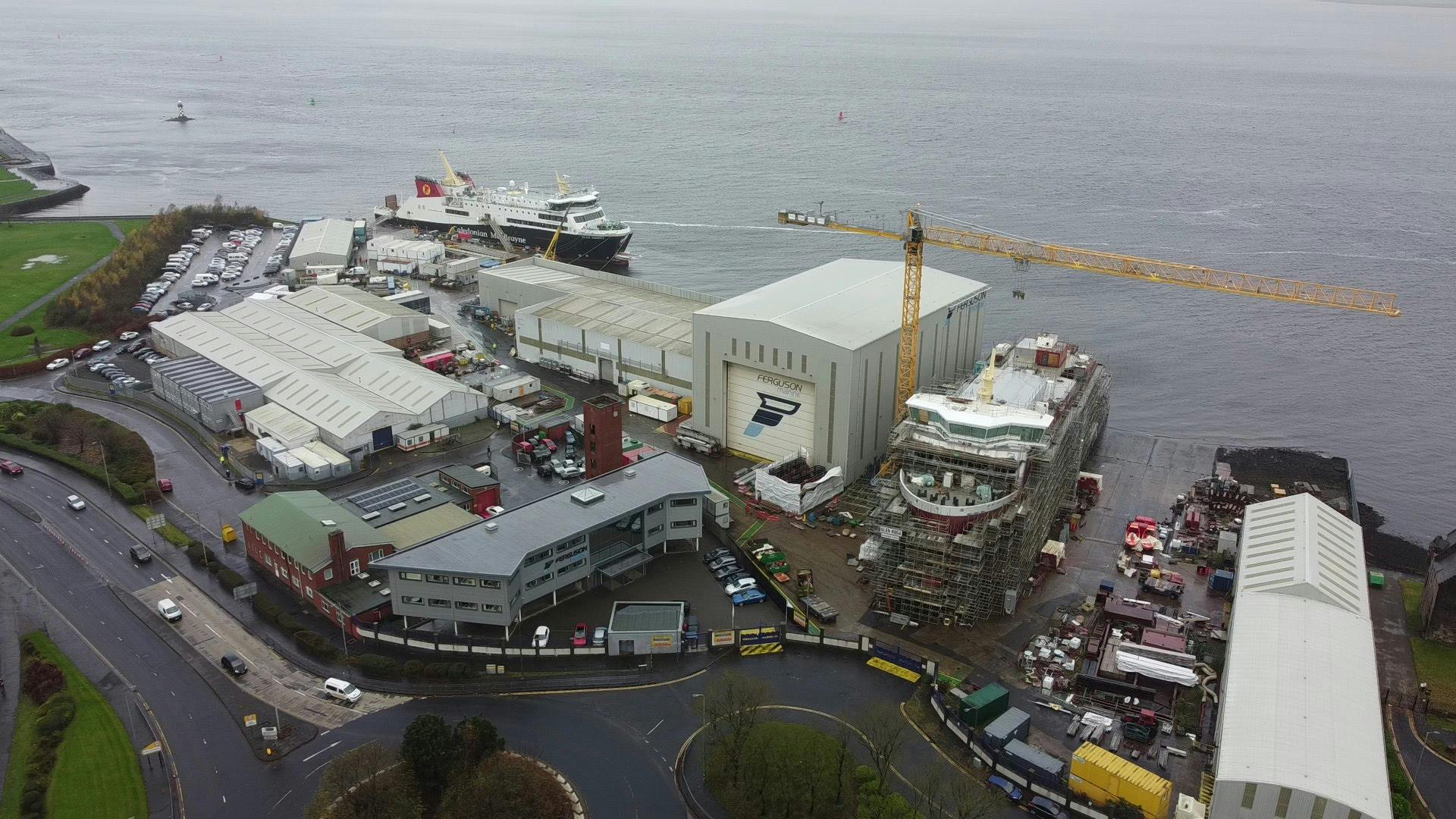
David Tydeman, CEO of Ferguson Marine, expressed concerns about the revised schedule: “We are evaluating the risks to further slippage on the planned late May handover date for Glen Sannox, the cascade impacts onto Hull 802, and the overall costs to complete impacts for both ships,” he stated. He further noted that additional delays and cost overruns might occur and promised to provide a detailed update to MSPs before their visit to the shipyard on 23 February.
The launch of Glen Rosa, originally due on 12 March, has now been delayed to 9 April to allow Glen Sannox to remain at the shipyard’s quayside for an extended period. The two ferries, when first contracted, were lauded as “green ships” due to their hybrid engines that can alternate between LNG and conventional marine diesel. However, the environmental benefits of these vessels are under debate due to the carbon footprint associated with the transportation of LNG fuel, predominantly sourced from Qatar.
The project has been marred by disputes, particularly over the LNG fuel system’s complexity and regulatory demands. Former Ferguson shipyard boss Jim McColl cited the choice of LNG as a primary reason for the project’s complications, a claim disputed by CMAL, the ferry procurement agency. Despite these challenges, CMAL maintains that LNG propulsion was a mature technology at the time of the contract award.
Following Ferguson Marine’s entry into administration in 2019 and subsequent nationalisation, the project’s costs and delays have continued to mount. The industry now awaits further updates, hoping for a resolution to the ongoing challenges and the successful completion of these pioneering ferries.
His letter in full reads as below.
“As requested in your letter 15th November ’23 and following approval by the FMPG board meeting last week, I provide an interim update to you and your committee.
In our letter to you 21st December, I identified an emerging risk relating to the LNG system on Glen Sannox. The very low temperature liquid (-160-170 degrees C) converts to high pressure gas fuel for the engines and during bunkering, very low temperature air is discharged from the on-board storage tank. The entire system requires specialist cryo-steels and we contracted with a specialist company for design and installation.
Supply of the final parts of the piping systems should have taken place in the last quarter of 2023, but was delayed, and I can now confirm that we’ve had an alternative specialist UK company on site since the beginning of January this year, with installation due to complete by the middle of March. The specialist dual fuel engine supplier will then commence the final testing and commissioning of the system which they advise usually takes 10 weeks (this is the first ship with LNG to be commissioned in the UK and hence we defer to their experience with other shipyards around the world).
Despite our best efforts to mitigate risks around timelines, this will have a bearing on the final handover of Glen Sannox.
We are evaluating the risks to further slippage on the planned late May handover date for Glen Sannox, the cascade impacts onto Hull 802 and the overall costs to complete impacts for both ships. We aim to update Scottish Government prior to your visit to site on the 23rd February (and to have data available for discussion at that visit).
In the context of reducing risk of delays to Glen Sannox, we have decided to move the launch date for Hull 802 from 12th March to the next suitable high tide date of 9th April. This has no impact on the programme for Hull 802 however it allows critical work on Glen Sannox in March to be carried out close to the FMPG engineering office and more efficiently alongside the quay in the shipyard.
Glen Sannox is booked for dry-docking1 3-7th April and will then move to the Inchgreen quayside as the operating base for further sea trials and the rest of the programme to handover. This move to mitigate further risk to handover of Glen Sannox has been discussed in the weekly ‘801 Acceptance Workgroup’ meeting involving SG, Transport Scotland, Calmac, CMAL and FMPG and has the support of that review team and the FMPG board.”
Ferguson Marine banking on UK frigate work to fill capacity
David Tydeman, CEO of Ferguson Marine in Port Glasgow, expressed his hope to secure substantial work from the Royal Navy’s Type 26 Frigate programme, potentially utilising over half the yard’s capacity.
Despite the uncertainties surrounding the future of the shipyard, Tydeman was confident about Royal Navy work supporting the yard during a recent Public Audit Committee meeting.
“We have been planning for some time,” he said, “and I am delighted that we were able to sign a framework agreement with BAE Systems.”
According to Tydeman, the agreement with BAE Systems would help address the workforce surplus at the Ferguson Marine yard as work on two ferries progressively winds down over the next 12 to 18 months.
He further added, “Both those yards (BAE and Babcock) have more work than they can do on their sites—as I said, this is a buoyant time in the shipbuilding market—and they need supporting contractors.”
Ferguson Marine started work on the first sections for a Type 26 Frigate earlier this year.
In terms of scale, Tydeman compared the additional, potential future work from the Type 26 programme to ongoing projects at Ferguson. “Hull 802 will be about 3,000 tonnes of weight when she launches down the slipway later this year, and a bow block unit for type 26 ship 4—which we hope to do with BAE—will be about 900 tonnes,” he stated.
Elaborating on this, he said “A programme of work with BAE can use more than half the capacity of the yard, and I hope that we can complement that with the CMAL small ferry programme.”
Additionally, he mentioned that the company is actively tracking opportunities in the market. “We have a small commercial team that is tracking the market and we have been putting in proposals to the patrol craft market,” Tydeman disclosed.
There are also ongoing discussions with operators in the wind farm market, providing potential long-term work. “The first of those ships could be built in 2027. That does not fill the immediate gap, but…that is a very significant opportunity for us in the future.”
Ferguson Marine Poised for Recovery Despite Current Challenges
The Chief Executive of Ferguson Marine, David Tydeman, recently said that Ministry of Defence work could potentially provide a “solid base” for the future of the troubled Port Glasgow ferry builders. Mr Tydeman insisted the shipyard was now in much better shape and was ready to re-establish its reputation with new orders.
“We have the opportunity, starting with 802 over the next year, to show we are as good as we were 10 years ago,” he said.
Speaking to the BBC, Tydeman said that the yard has recently secured some new work for BAE Systems, delivering Type 26 frigates. Adding that, Despite the difficulties with the current CalMac ships, the yard is also hopeful of future work for the state-run ferry operator, particularly for smaller vessels similar to ferries the yard has successfully delivered in the past. Tydeman added that seven planned CalMac vessels, along with Ministry of Defence work, could potentially provide a “solid base” of work for the next five to ten years.
“They are exactly in our sweet spot of what we could do well. We’ve just got to price them properly and deliver them on time – and win some hearts and minds to give us that contract.”
Not all doom and gloom – a history of bidding for naval work
Unfortunately, Ferguson Marine missed the boat a couple of years ago on the chance to carry out supply-chain work for the Type 31 Frigates being built on the east coast. Then Defence Secretary Michael Fallon visited the Ferguson Marine shipyard at Port Glasgow in 2017 where he remarked upon the opportunity for the Clyde yard to build the new frigates. Babcock, Thales, BMT, Harland & Wolff and Ferguson Marine had teamed up to form ‘Team 31’ a consortium to bid for the Type 31 Frigate.
Babcock CEO Archie Bethel said:
“Team 31 will allow Babcock and Thales to take forward the key lessons from the Aircraft Carrier Alliance and apply them in a new and highly capable team with Harland & Wolff, BMT and Ferguson Marine.”
While Babcock eventually won the bid, Ferguson Marine was no longer able to receive any work due to the issues at the yard. After Harland & Wolff and Ferguson Marine both collapsed into administration, Bethel told the Financial Times that both yards would still “get a chance to bid” but the company “would not risk the programme”subcontracting work out to them.
Ferries and Frigate parts
On a brighter note for the yard as it exists today, Ferguson Marine had recently said that that they intended to work with defence contractor BAE Systems “to re-engage with them as a supply-chain partner” for the eight, complex Type 26 Frigates being built upriver. Ferguson say that this third-party work will contribute millions to the costs of running the shipyard and help sustain workforce skills. Luckily for them, they got the work.
“The FMPG board also approved our acceptance of a letter of intent from BAe for FMPG to re-engage with them as a supply-chain partner for their T-26 programme. This type of 3rd party work will develop during the next 3-6 months, and we have assumed will contribute ~£6-7m to the costs of running the shipyard through to handover of 802 (thus reducing the costs charged to Glen Sannox and 801 in 2023/24 by this amount) and creating work for staff not required on the ferries as commissioning of Glen Sannox progresses through to handover.
Overall, the revised best estimates of costs to complete include assumptions on efficiency improvements, contributions from 3rd party work, allowances for inflationary pressures and other economic factors such as cost of living, energy costs, and, importantly, sensible estimates of contingencies that may be required.”
The third-party work on behalf of a military shipbuilder upriver in Govan requires quality, precision and exacting standards. It’s a very big deal when it comes to sustaining the future of the Port Glasgow yard and it, in my opinion, demonstrates the trust the shipbuilding industry has in the Port Glasgow shipyard.
A brighter, more transparent future
It’s no secret that the two vessels, Hull 802 and the Glen Sannox, will be more than £150m over budget and five years late.
The structural completion of Hull 802, which had been scheduled to begin in September 2022, will now happen in late November of this year. With final dry docking and trials finished by the first quarter of 2024, practical completion is now scheduled for the end of December 2023.
All of the above being said, activity at the yard appears to be increasing and if recent statements are anything to go by, I think the transparency the yard now appears to be committed to shows a far more professional situation than the yard’s workforce endured previously. Yes, there are setbacks – massive setbacks actually – but the largest shipbuilder in the country has given them a vote of confidence and that speaks volumes.


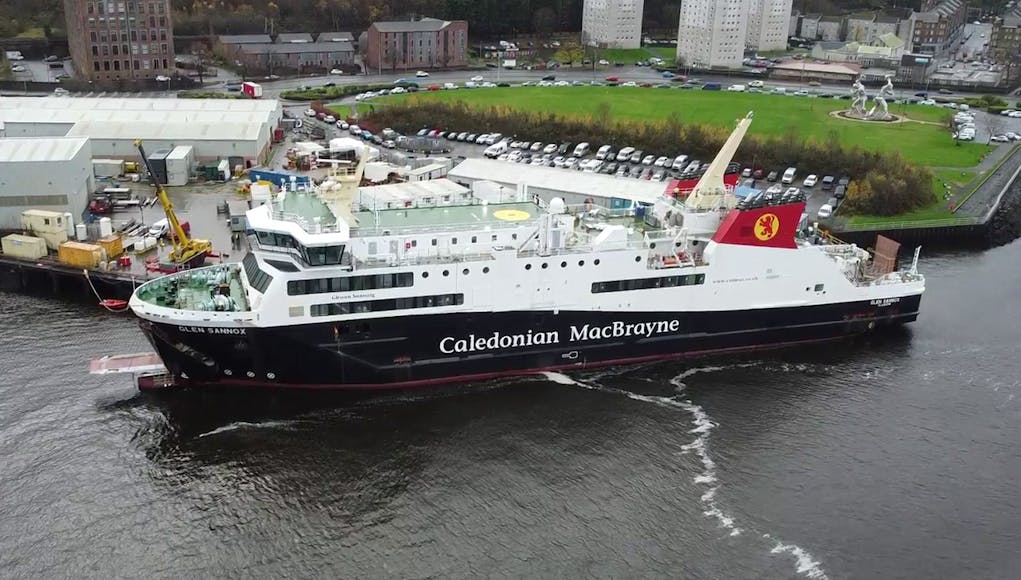


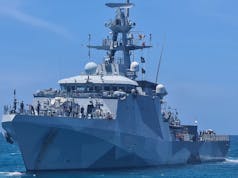
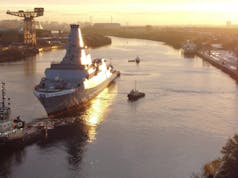
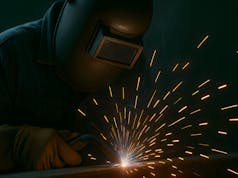
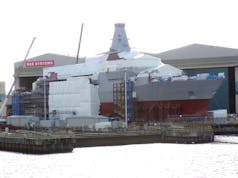





All too believable and all too predictable.
So it has taken them 5 years to sort out some LNG pipe work……crikey I used to use loads of liquid helium and nitrogen back before the Millenium and getting that pipe work was not that hard a few days/weeks. As well has high pressure CO – that was another story!
LNG ship/boat isn’t a new thing……the engineering was all done in the 00’s.
Bit like means of escape was news to these wallies.
I hope BAE know what they are doing giving this utterly disorganised bunch key hull work…?
Interesting that the new piping is sourced from a ‘UK’ company, my money is its one of those evil English outfits otherwise we would be hearing a bit more about it. BOOOOO ! etc.
Its frightening how the SNP have got away with this despite the BBC documentary flagging up numerous issues in the bidding never mind the clusterf*ck that has followed it.
The level of incompetence is unbelievable.
What it tells you is that either the section mangers haven’t got a clue or they don’t dare flag the issues and get them out into the open.
Yep. This whole LNG thing is totally missleading Norway has built LNG ferries as long ago as 2000s. Norway has now moved on to look at Hydrogen to fuel ferries.
Agreed
i would not trust them with frigate work , unless you want trouble.
I think the main issues at the yard are with the management and design teams, so I don’t think it is an issue for them to work on frigates where BAE is essential just using their welders/fabricators. I understand that BAE are also giving them extra training.
You couldn’t make this up.
The value of the original 2015 contract for the two relatively small (1,200 dwt) ferries was £97 million, that doubled by 2019 and is now passing £400 million, plus c.£100 million of costs incurred by CalMac et al due to their non-delivery.
Doing some back-of-an-envelope numbers, the Scottish government could have saved money by ordering in 2015 the two ferries from a foreign shipyard whilst giving every employee (158 as at 18 August 2019, excluding 117 contractors) at Ferguson Marine £0.5 million! That assumes that the ferries entered service in 2019, just a year later than originally planned.
If we include the subsequent delays, then a payment in 2015 of £1 million per Ferguson employee would now be a real bargain.
So two super simple ferries have cost getting on for the same as a type 31? You just know that wokery was involved here, whether it was giving somebody a job for which they were wholly unqualified, no doubt 7 different sets of heads so the passengers which identify as rabbits arent “excluded” , his, hers and maybe dining rooms, wheelchair access to the shaft tunnels, visual aids for lookouts, life rafts and doors all designed for the clinically obese to pass through in same sex couple format….and a mood room for those that are not able to complete a whole day at work without having an “emotional event”…..and still nobody is fired…….. obviously the poor islanders who just wanted a nice, simple, reliable, affordable ferry will have to pay for this stupidity for a generation
Natural gas was in the 1990s a good interim solution to cut out the use of more poluting oil.
However given the current need to cut out the burning of fossil fuels including natural gas to limit the future damage caused by climate change these two ships ought to be the last natural gas powered ships in the country.
The route these ships are likely to be used on to Aran could now be operated using electricity supplied from the national grid and stored in batteries for the majority of the time. A back up will be required for those few times that unexpected or longer journeys mean that the batteries run out of energy.
The back up could come from several different fuels all of which could be made using surplus renewable electricity from Scotland.
While not my personal choice it’s looking at the moment that methanol synthesized from Hydrogen produced by electrolysis using surplus electricity would fit in most easily with the developing alternative fuels market for shipping.
It is relatively easy to store and handle and it’s high price and some resulting carbon emissions ought to be manageable if most journeys are carried out with low cost local renewable power stored in batteries.
Obviously Ferguson Marine had very little experience on that size of ferry,and I hope BAE systems don’t give them too much work,as they are a quality company..
But it’s disappointing to discover at this late stage,that theLNG has to be delivered on site via lorries…it’s sheer incompetence,it’s all part of the package
When you deliver your product…Georgieboy
Here is an idea, why not use diesel…….this is two tiny ships floating around in an area with almost zero population. Who cares if there is some smoke or CO2? Their output is, (relative to say….India) so tiny that it is not even worth considering. Who comes up with this insanity? Which moron thought this was a good idea? All that was needed was a couple of simple, reliable diesel or diesil electric ferries…….. fraction of the cost, easy to look after, no need for piping made from unobtainium 20……..
Here’s an idea lets nationalise all the other yards in tthe UK as it clearly works 😀